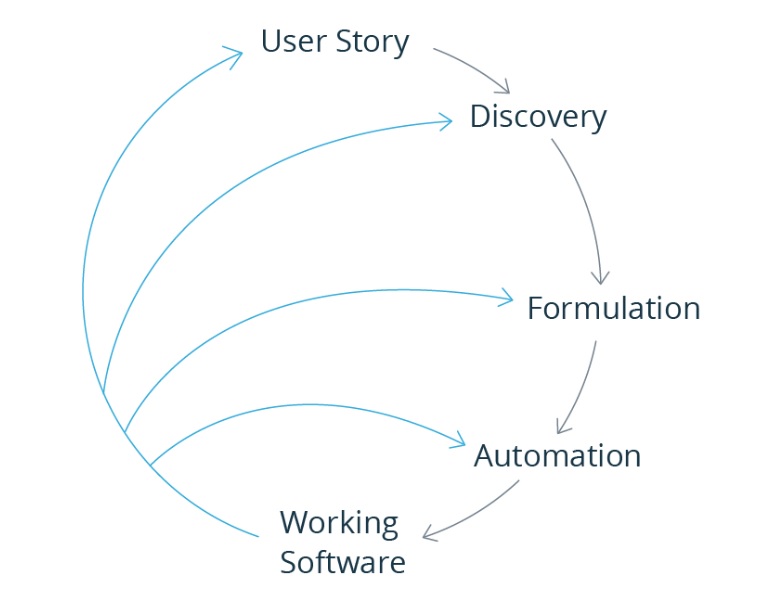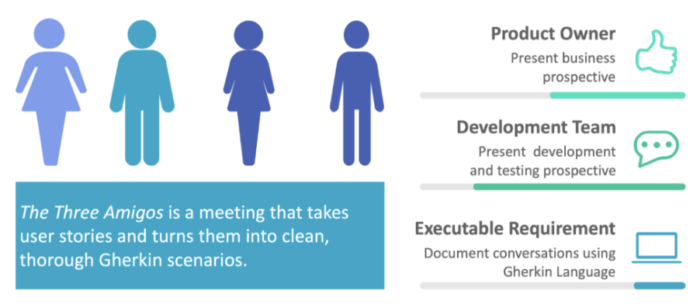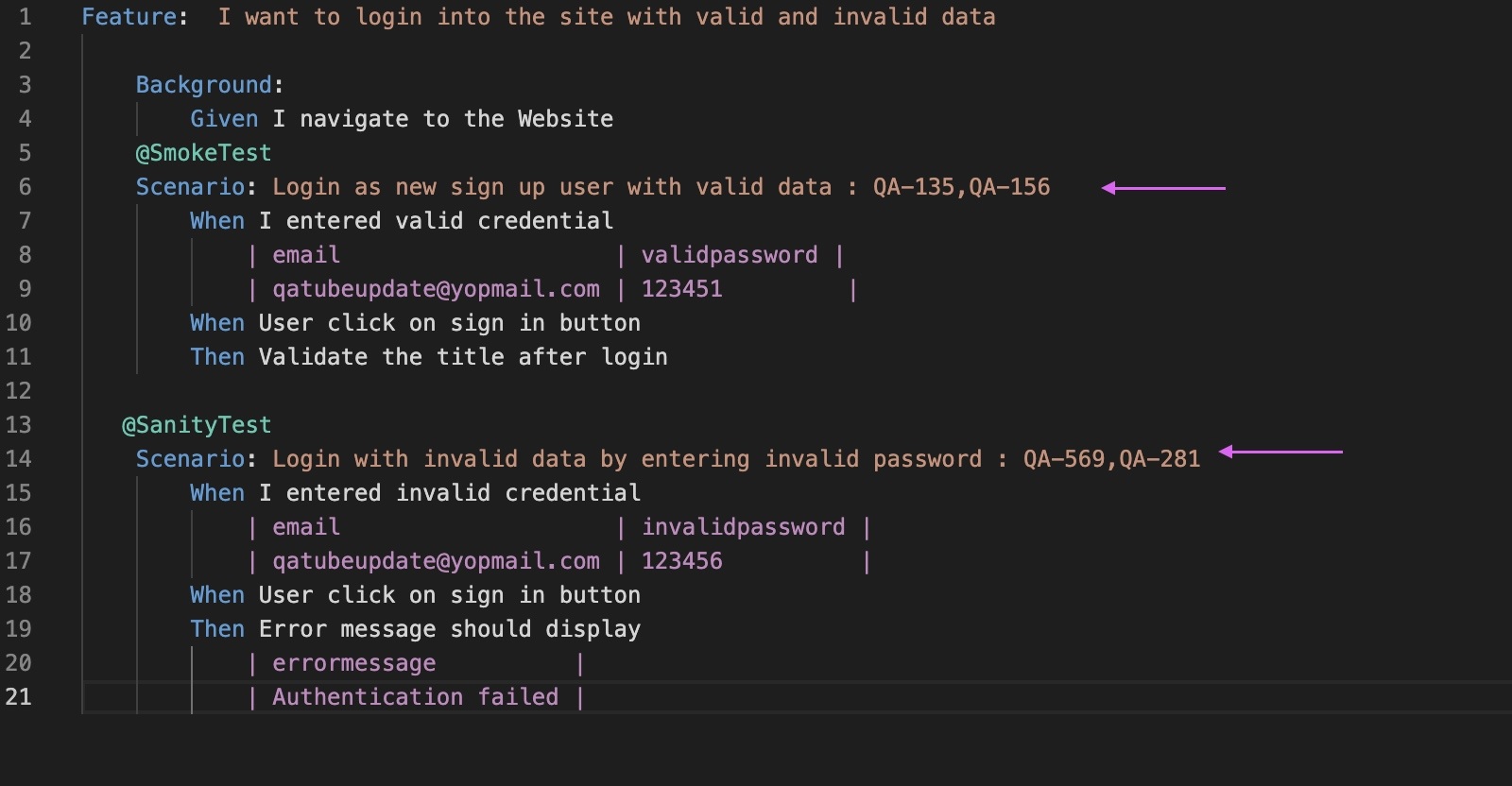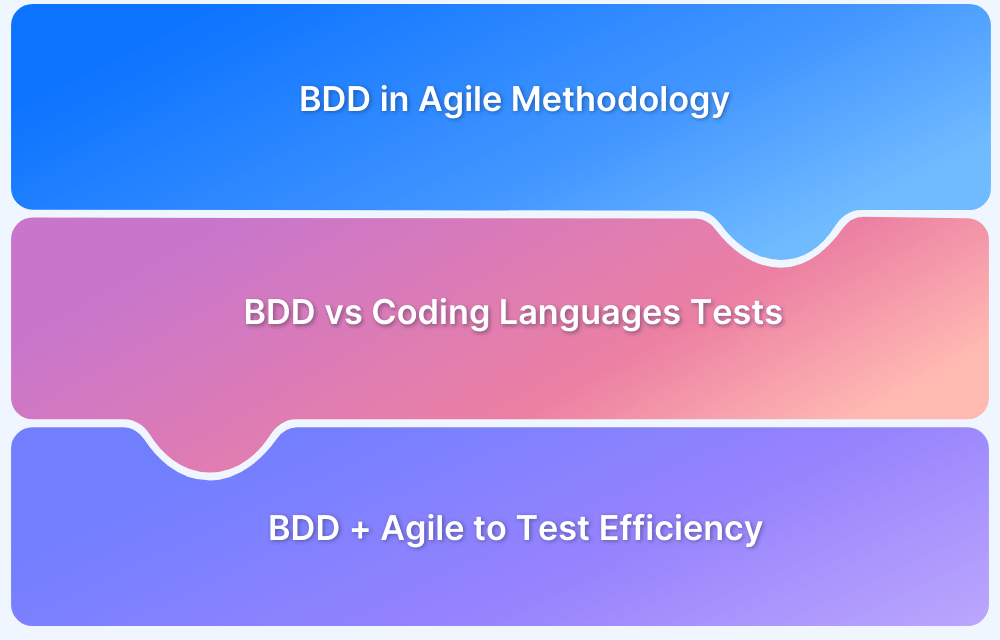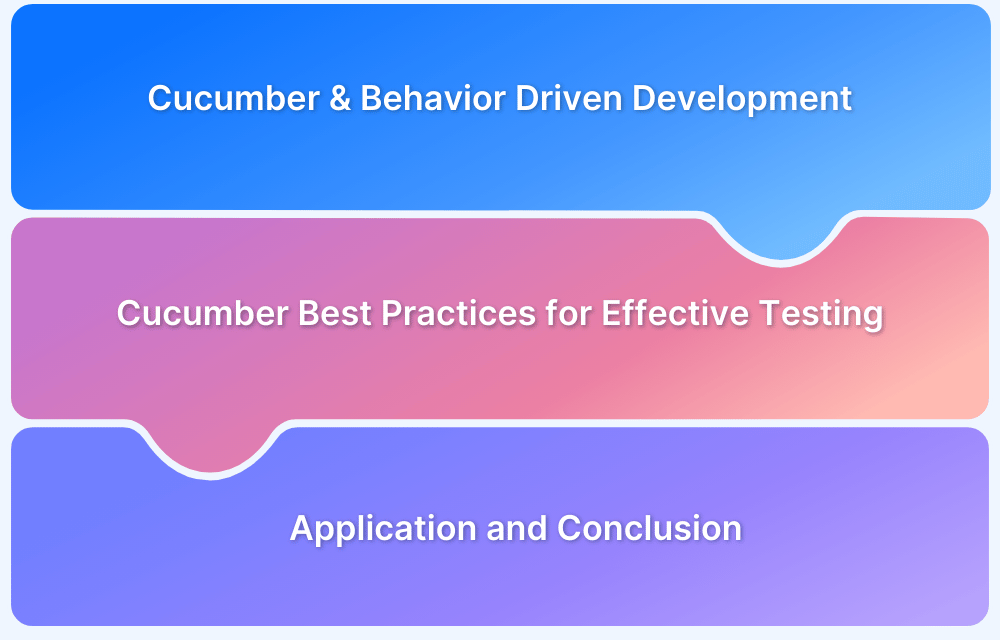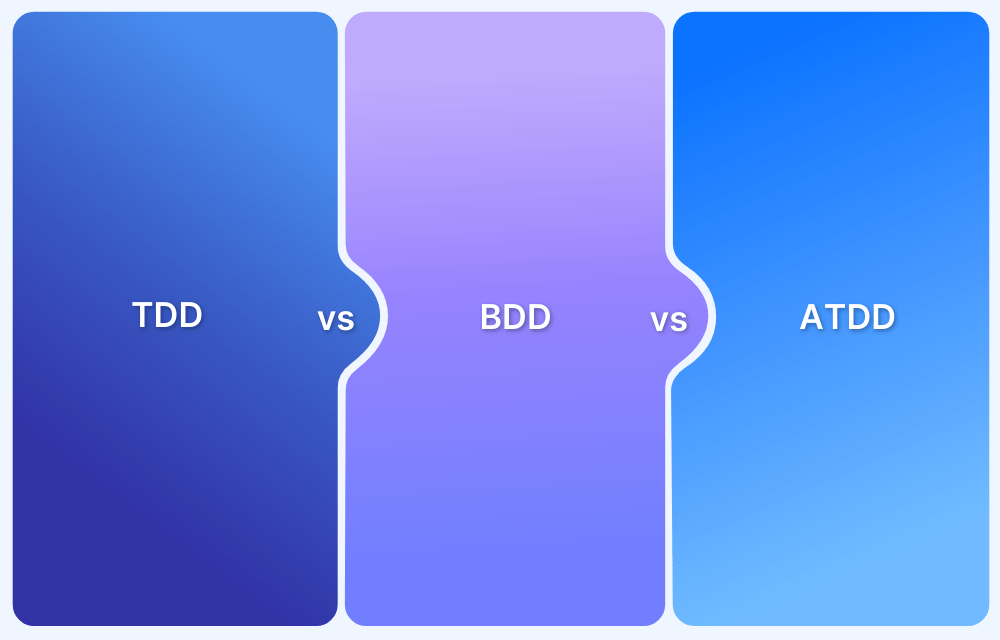Benefits of Test Management and BDD in Software Testing Process
By Sourojit Das, Community Contributor - September 18, 2024
Test management and Behavior-Driven Development (BDD) are two key approaches in modern software testing that enhance the quality and efficiency of the development process. Test management involves organizing, planning, and controlling all testing activities to ensure software reliability and functionality.
It enables teams to track progress, maintain consistency, and improve collaboration between developers and testers. BDD, on the other hand, focuses on defining tests based on user behavior and expectations, using a common language understood by all stakeholders.
Rise of BDD in Software Development
Since the advent of Behaviour-driven development (BDD) from Agile and test-driven development, it has gone from strength to strength.
Current market research comprehensively forecasts the increased adoption of BDD Tools between 2022 to 2029, with companies of every size implementing BDD. Several key players like IBM, Wells Fargo, and CitiBank are also joining the league by adopting BDD.
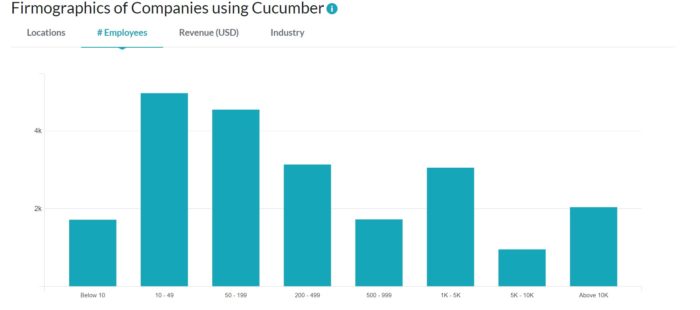
Though the trends underline that teams and organizations can benefit from test management and BDD, it is imperative to understand that it is more nuanced than simply managing tests structured in a Behaviour Driven manner.
But before understanding the benefits of Test Management and BDD in the Software testing process, it is imperative to understand both test management and BDD first and then focus on their synchronization for optimality in the software testing process.
Significance of BDD Testing
Behavior-Driven Development (BDD) is gaining traction in modern software development due to its collaborative and inclusive approach. BDD involves the entire team—developers, testers, and business stakeholders—working together to define and ensure that the software meets the needs of all parties involved.
In BDD, defining the system’s behavior before development begins is crucial. This approach helps to remove ambiguity from requirements and aligns the development process with specific business objectives.
By focusing on the desired behavior of the system, BDD ensures that the software is built to fulfill clearly defined goals. Frameworks like Cucumber and Behave have become popular in digital businesses because they facilitate the creation of executable specifications.
These frameworks make it easier for both technical and non-technical stakeholders to understand and validate requirements, enabling automation of testing processes. This alignment between business goals and technical implementation ensures high-quality software that meets the agreed-upon standards and expectations.
Overall, BDD testing promotes a collaborative environment and enhances the clarity of requirements, leading to more reliable and effective software development.
Benefits of BDD Testing
Behavior-Driven Development (BDD) offers numerous advantages in software development by emphasizing collaboration and clarity. Here’s a summary of the key benefits of BDD testing, supported by practical examples:
1. Improved Communication
- Benefit: BDD fosters better communication among team members, including developers, testers, and business stakeholders.
- Example: In a project for an e-commerce site, using BDD allowed the team to collaboratively define user stories like “As a user, I want to add items to my cart so that I can purchase them later.” This clarity helped ensure everyone understood the feature’s requirements and implementation.
2. Enhanced Requirement Clarity
- Benefit: BDD helps in creating clear, concise requirements that are understandable to all stakeholders.
- Example: For a banking application, BDD scenarios such as “Given I am logged in, when I transfer money, then the balance should be updated” make it easier to understand what needs to be tested, reducing ambiguity in the requirements.
3. Automated Acceptance Testing
- Benefit: BDD facilitates automated acceptance tests that ensure the software meets the business requirements.
- Example: Using tools like Cucumber, a team automated scenarios like “Given a user is on the checkout page, when they enter their payment details, then the payment should be processed.” This automated test runs with every build to confirm the feature works as expected.
4. Early Detection of Issues
- Benefit: BDD helps identify issues early in the development cycle by testing business scenarios from the start.
- Example: During the development of a CRM system, BDD scenarios like “When a new contact is added, then it should appear in the contact list” helped catch issues with data persistence early, preventing more significant problems later.
5. Better Test Coverage
- Benefit: BDD ensures comprehensive test coverage by defining scenarios based on user behavior.
- Example: In a travel booking application, defining BDD scenarios such as “Given a user searches for flights, when they select a flight, then they should see the booking details” covers all critical aspects of the booking process.
6. Increased Stakeholder Involvement
- Benefit: BDD encourages active involvement from business stakeholders in the testing process.
- Example: For a healthcare app, stakeholders used BDD to define scenarios like “When a patient schedules an appointment, then they should receive a confirmation email,” ensuring that their needs were directly reflected in the testing process.
7. Readable and Maintainable Test Cases
- Benefit: BDD produces test cases that are easy to read and maintain, even for non-technical stakeholders.
- Example: Test cases written in Gherkin, such as “Scenario: User login with valid credentials,” are simple and clear, making it easier for both testers and business users to review and understand.
8. Alignment with Business Goals
- Benefit: BDD aligns development and testing activities with the business goals and user needs.
- Example: In a subscription service project, BDD scenarios like “When a user subscribes to a plan, then the subscription status should update” ensure that the software meets business objectives related to subscription management.
By integrating BDD into the development process, teams can improve communication, enhance requirement clarity, automate acceptance testing, and ensure that software aligns with business goals, leading to more effective and reliable outcomes.
Challenges of BDD Testing
While Behavior-Driven Development (BDD) offers many benefits, it also comes with its own set of challenges. Here’s a look at some common difficulties associated with BDD testing, along with practical examples:
1. Initial Setup Complexity
- Challenge: Setting up BDD frameworks and integrating them with existing development tools can be complex.
- Example: For a new project, configuring Cucumber with a Java application requires setting up multiple dependencies and ensuring compatibility with the existing build system, which can be time-consuming and complex.
2. Requirement Ambiguity
- Challenge: Even with BDD, ambiguities in requirements can persist, leading to unclear test scenarios.
- Example: In a project for a social media platform, if a user story like “As a user, I want to interact with posts” is not detailed, it can lead to vague BDD scenarios that don’t cover all necessary interactions, causing incomplete testing.
3. Maintaining Test Scenarios
- Challenge: Keeping BDD scenarios up-to-date with changing requirements can be challenging.
- Example: In a retail app, if new features are frequently added, maintaining and updating scenarios such as “When a user applies a discount code, then the total price should update” can require constant revisions to keep them aligned with the latest functionality.
4. Stakeholder Involvement
- Challenge: Ensuring consistent and meaningful participation from all stakeholders can be difficult.
- Example: In a project involving multiple business units, coordinating input from all relevant stakeholders to define scenarios like “As a manager, I want to generate reports” may be challenging, potentially leading to incomplete or conflicting requirements.
5. Complex Scenario Implementation
- Challenge: Translating complex business requirements into simple, executable BDD scenarios can be difficult.
- Example: In a financial application, defining complex scenarios such as “When a user performs a multi-currency transaction, then the conversion rates should be applied correctly” can be intricate, requiring careful formulation to ensure all edge cases are covered.
6. Overhead of Automation
- Challenge: Automating BDD tests requires significant effort and maintenance, especially for complex scenarios.
- Example: Automating a scenario for a complex workflow in an e-commerce application, such as “When a user completes a purchase, then an email confirmation should be sent,” can involve substantial effort in writing and maintaining automation scripts.
7. Skill Requirements
- Challenge: Effective use of BDD requires team members to have a good understanding of both technical and business aspects.
- Example: In a project for a healthcare system, testers need to be proficient in writing BDD scenarios in Gherkin and understanding medical domain-specific requirements, which can require additional training and expertise.
8. Integration with Existing Processes
- Challenge: Integrating BDD with existing development and testing processes can be challenging.
- Example: In a legacy system, incorporating BDD might require significant changes to the existing workflows and test strategies, which can be disruptive and require additional time and resources.
Addressing these challenges involves careful planning, clear communication, and ongoing collaboration among all team members to ensure that BDD effectively supports the development and testing process.
How do BDD and Test Management Stack Up
Test management usually refers to managing and monitoring a suite of tests. It is done to assess and report various aspects of the quality of a system and ensure that the project resources are well-utilized, minimizing any threats associated with high-risk areas.
Test Management allows the stakeholders and company leadership to organize, control, analyze, and trace the testing process. The goals of test management are:
- Reduce the time required to meet deadlines
- Increase collaboration between team members
- Streamline project resource allocation
Read More: Understanding Test Case Management
Behaviour-driven development (BDD) supports the agile methodology by providing constant input from the end user’s perspective. The three core BDD practices are,
- Discovery: This aims to create a shared understanding of the project requirements by collaboration. It is usually facilitated by structured conversations about rules and examples.
- Formulation: Case studies detailing the examples of system behavior are documented in terminology suitable to the business domain.
- Automation: The implementation design is guided by automation, and the full participation of the delivery team is essential before writing the corresponding implementation code.
This can be visualized using the diagram below:
While comparing the two, it becomes evident that Test Management is more focused on:
- Providing relevant, actionable insights into system quality, and requires the test automation/delivery team to implement both automation and manual test execution steps.
- Both the functional and non-functional aspects of the test domain
Whereas the scope of BDD focuses more around:
- Reducing misinterpretations of the software requirements and promoting collaboration in test case formulation. And since the automated interpretation of the business-readable test code is inseparable from the actual implementation, it may not depend on a separate delivery team.
- Specifying the “functional behaviour” of the system, rarely delving into non-functional requirements.
Leveraging BDD and Test Management for the Software Testing Process
Though there may be some intrinsic differences between the scope of traditional Test Management and BDD-based testing, there are a number of areas where they can work in tandem to benefit the overall Software Testing Process.
Increases and Improves Project Collaboration
Tests written in the programming language can sometimes be confusing for non-technical business stakeholders. However, BDD encourages close-knit communication and conversations within these stakeholder categories and helps clear potential misunderstandings about user scenarios and correct mistakes in the tests written in plain English.
BDD is known to promote frequent conversations among key stakeholders, famously known as the “Three Amigos”, which are:
- Business Team (BA): It consists of the Product Owner or a Business Analyst whose job is to define what is the problem to be solved through the product.
- Development Team (DevOps): This team is made up of the developers who provide solutions on how the problem will be solved.
- QA Team: It consists of the testers who find bugs in the product and verify whether it works as expected, and identifies any edge cases that can lead to product failure.
The added advantage of this collaboration is that this helps develop the tests early on, as opposed to traditional testing using code where the QA team may or may not frequently communicate with the other stakeholders.
This can be further strengthened by:
- Optimally Outlining the scenarios for BDD: The scenario outline injects the info at the scenario level rather than the step level. Scenario outline followed by the keyword.
For example,
Feature: I want to login into the site with valid and invalid data Scenario Outline: Login Validation Given I navigate to the Website When I enter “<email>” and “<validpassword>” to login Page And User click on sign-in button Then Validate the “<title>” after login Example: | email | validpassword |title| | qatubeupdate@yopmail.com | 12345 | Home |
- Using tags to Identify Test Case Categories: Using tags could be the best practice when you want to run a bunch of test cases, especially in case they are not to be run all at once, or are to be executed in batches. These tags for the BDD test cases can clearly communicate to groups of tests like Smoke tests, Sanity Tests, Regression Tests, etc.
For example,
Feature: I want to login into the site with valid and invalid data Background: Given I navigate to the Website @SmokeTest Scenario: Login as a new sign-up user with valid data When I entered a valid credential | email | validpassword | | qatubeupdate@yopmail.com | 12345 | When a user clicks on sign-in button Then Validate the title after login @SanityTest Scenario: Login with invalid data by entering an invalid password When I entered an invalid credentials | email | invalidpassword | | qatubeupdate@yopmail.com | 123456 | When the user clicks on the sign-in button Then Error message should display | errormessage | | Authentication failed |
Assures Better Test Coverage Assurance
BDD scenarios are focused and defined around specific expected outcomes to decrease the ambiguity for developers. It can be done using:
- Mapping of BDD Scenarios with Application Lifecycle Management Tool Requirements
User Story IDs can be integrated into the BDD scenarios for smooth mapping of business requirements to BDD-based test cases. This can be mapped out in Cucumber scripts as shown below.
Makes it easier to translate into automated tests
A particular advantage of the BDD framework is that it is more convenient to replicate automated tests in a reusable and data-driven manner. It is achieved by:
- Using Background in your scenarios: It is always the best practice to put steps that are repeated in every scenario into the Background. The background step is run before every scenario.
- Using a Data Table for data parametrization: It’s recommended to use a Data Table to store the data. Data can be given as parameters within the step, and this helps in Data Driven Automation testing.
These can be implemented in Cucumber as follows:
Feature: I want to login into the site with valid and invalid data Background: Given I navigate to the Website Scenario: Login as a new sign-up user with valid data When I entered a valid credential | email | validpassword | | qatubeupdate@yopmail.com | 12345 | When the user clicks on the sign-in button Then Validate the title after login Scenario: Login with invalid data by entering an invalid password When I entered an invalid credential | email | invalidpassword | | qatubeupdate@yopmail.com | 123456 | When the user clicks on the sign-in button Then Error message should display | errormessage | | Authentication failed |
Pro Tip : Boost the effectiveness of your BDD and test management by integrating BrowserStack Test Management into your workflow. This platform centralizes the creation, organization, and tracking of BDD test cases, ensuring they align seamlessly with business requirements.
By using BrowserStack Test Management, you gain real-time visibility into test execution, track progress efficiently, and update scenarios effortlessly as requirements evolve. This integration enhances collaboration across your team, ensuring that your BDD testing is comprehensive, up-to-date, and reflective of the highest quality standards.
Why run BDD Tests on Real Devices?
Running Behavior-Driven Development (BDD) tests on real devices is essential for accurate and reliable results.
Real devices provide a true representation of how users will interact with your application under real-world conditions, including various hardware specifications, operating system versions, and network environments. This level of accuracy helps identify issues that might not be apparent on emulators or simulators, such as device-specific bugs or performance discrepancies.
BrowserStack Automate offers a powerful solution for executing BDD tests on real devices. With BrowserStack Automate, you can run your BDD scenarios on a vast range of real devices and browsers in the cloud, ensuring comprehensive test coverage and real-world validation.
The platform’s extensive device lab allows you to test your application across different screen sizes, OS versions, and device capabilities, providing you with accurate feedback and insights.
By leveraging BrowserStack Automate, you ensure that your BDD tests reflect the actual user experience, leading to more reliable and high-quality software. This integration not only simplifies the testing process but also accelerates development cycles by delivering actionable results in real-time.
Conclusion
The cost of debugging the codebase can become both expensive and daunting towards the end of the product life cycle. Apart from bugs which could cost a lot in terms of both computational and/or financial resources. A bug could lead to a major code rewrite that could push back product launch by weeks, if not months.
Thus it is imperative to implement BDD along with modern test management practices like Agile Test Management to get the requirements correctly identified and tested at the very outset.
Cucumber is a great tool to get started with Behaviour Driven Development (BDD). It is recommended as Cucumber is used to execute automated acceptance tests written in the “Gherkin” language, which allows for business-readable test descriptions.
Recommended Read: Test Automation using Selenium and Cucumber Framework: Tutorial
While running the Cucumber framework, testers would want to test their applications on multiple browsers, both live and automated. This is where cloud testing infrastructure like BrowserStack comes into the picture, providing a Cloud Selenium Grid of 3000+ real browsers and devices to choose from, thus making life easier for QAs. Go ahead and implement BDD in Agile to make your testing practices highly efficient.
